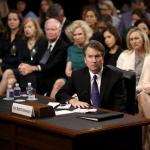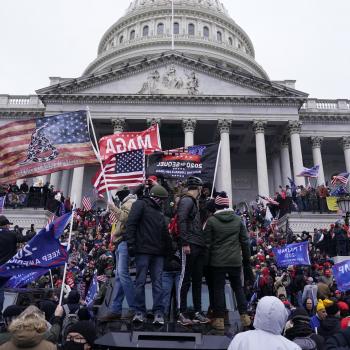This sermon is part of a series, Resist: Justice Heroes from the Bible to the Big Screen. In worship, we started with a rousing game of “Yoda or Proverbs?” Which sort of loses something in translation to print … but do check it out for your next youth group function!
Like some of the other movies we’ve featured in this series, the Star Wars franchise has been around for decades and can be a little overwhelming. But let’s talk about the common thread that runs through ALL of the Star Wars movies, even as other elements change … The Force.
Storylines evolve and characters come and go: but The Force is eternal. It is also INternal. It’s a power of the mind and the soul, an inward strength that—when employed effectively—can control external factors.
Yoda, though he’s not even in some of the later, newer movies, is powerfully present in spirit through all of them, because he has nurtured The Force in so many young Jedi, his wisdom lives on in them. The Force itself still moves in them. It stretches beyond a single episode or character, or even a single generation. It is the thing that moves the rebellion from one challenge to the next. For true Jedi, The Force lives at the core of their being, and always at the heart of resistance.
In our scripture today, the disciples are out on the road, on their mission to deliver the gospel to communities near and far. This work has always been difficult, but now they have to do it without Jesus. He was the one that kept them focused; the one that always knew when it was time to get away and rest; the one that always knew how to deal with difficult people; the one who was always unafraid when the local religious or governing body tried to run them out of town. Above all—Jesus was the one who brought the thunder. Not just the preaching thunder, but the healing. The signs and wonders; the amazing, astounding miracles that kept people coming to hear what he had to say.
How in the world were they supposed to do this without him?
And yet, here they are at Solomon’s Portico. “Solomon’s Portico” sounds like a great band name. But it’s actually the outer court of the Temple in Jerusalem. And they find, just as they did in the days when Jesus was with him, that the crowd presses in around them … Can you imagine how that went over with the religious leaders, who were preaching on the inside of the temple, when the crowds moved outside to hear these guys? That was probably … tense.
As the crowds gather close, the disciples begin to reach out and touch the people, and pray for them. I imagine it was much like the day of Pentecost, with all the many words and maybe even a few different languages, voiced all at once in prayer; and then, suddenly in a rush of sound, they find—just like in the days when Jesus was with them—that the people are miraculously healed by their prayers. The injured and lame walk; the blind see; the leper is made clean. And all go away whole.
In other words—The Force is with them; even if Jesus is not.
This is the power of the Holy Spirit on display. That invisible, mysterious thing that makes the power of Jesus a living presence in the hands of disciples. In pastor’s class with the kids who are preparing for baptism, I always use wind to teach about the Holy Spirit. I use a fan, or balloons, or both, to demonstrate how you can’t see the Spirit—but you can sure see what it does. You can’t see the wind, but you can see what is moved by the wind.
You can’t see the Holy Spirit, but you can see what it moves.
The Holy Spirit is “the force” that transcends time and space; the power of God made known through the lives of the faithful. As the body of Christ, we have that Holy Spirit with us too, even today.
The work of social change and resistance can be heady and intellectual. It can be practical, and it can be physically taxing. But we often forget—it is also spiritual work. We have to cultivate a spiritual life that will help us on that journey; an inner force that can harness the power of the Spirit to heal a broken world.
The Civil Rights movement marked one of the greatest societal shifts in recent memory. When we study the history, we see pictures and we hear speeches. We recall protests and sit-ins; relevant policy shifts and significant court cases. But where history often fails us is in recalling the deep spirituality that rooted that work of social change in something bigger. The leaders of that work—MLK, Rosa Parks, Frederick Douglass, all of the names you know and many of the ones you don’t—they were not just cultural leaders, they were spiritual leaders. They were part of something bigger than themselves that would transcend a single moment in history—and carry the spirit of social transformation into the next generation.
On an episode of OnBeing not long ago, Krista Tippett interviewed some of the key leaders of #BlackLivesMatter, and they talked about how their work was rooted in that same spirituality of the Civil Rights movement. They cited the people who taught and modeled faith for them at a young age; they talked about a deep sense of love and belonging in community, and a faith story that was about more than just a place in time.

This week, I’ve been wondering if there needs to be a spiritual awakening at the heart of the #MeToo movement. Because those of us who hope to see equality for women in our time are weary; and we are angry. But it seems like many spiritual leaders have nothing to offer but some trite (and out-of-context) scripture verses about forgiveness and loving our enemies. To that I say—heck no. Jesus never said anything about accepting injustice or abuse as a way of life, or the way of the world. He never told the marginalized and vulnerable to accept their lot and disappear into the background. You know, so we can all just get along.
We are entitled to our anger. Men and women alike who want a more just world, we should not be silenced just because we are incensed. Let our anger drive transformation. But at the same time: if we really want meaningful change, we have to practice resilience. We’re going to have to find not just inspirational heroes, but a force. We need to tap into an inner strength; a force that is within us and also more than us, to keep us from crumbling under the weight of fatigue and anger. The assault and abuse that #MeToo seeks to name and dismantle comes with such deep spiritual wounds, so the work of changing that culture has to come from a spiritual place of healing.
For social change to be sustainable, it has to be work of the Spirit—the spirit of community, the spirit of connection and purpose, and the spirit of something that is holy and more-than-us. More than any one person or moment in time.
We tend to think of social change as movement—and it is, both literally and figuratively speaking. But the most transformational leaders are fueled by an inward life; their work is connected to a greater community. If we aren’t connected to the body of God’s continued presence in the world, we run on empty.
This is why we are called to a life, not just of justice work, but of prayer; of worship, and worshipful work; and of sharing our faith in community. In each of these disciplines, we stay connected to a Spirit of love, compassion, and justice—a spirit that carries the gospel from one moment, one movement, one generation to the next.
Sometimes it all seems insurmountable, fighting these big, systemic injustices like racism and misogyny. It can feel … well, kind of like Destroying the Death Star. A losing proposition.
There’s a scene in Rogue One where Jen Erso realizes she might have to go and take on this planet-wrecking weapon on her own. Her father is the one who built it—against his will. But he left her something; a design flaw that would allow her to destroy it before it could kill masses of people. As Jen addresses the leaders of the Alliance, explaining her plan to them, they are reluctant to back her mission. The challenge is too much.
They say, “What chance do we have?”
Jen’s response is: “What choice do we have?” And before she strikes out on her own, she reminds them all … The rebellion is built on hope. A hope that is bigger than all of them
But then she finds that she’s not alone after all. A few friends have followed her to the ship she will steal for this mission. She is surprised to see them. “I’m not used to people sticking around when things go bad,” she says. And Kaffian says simply, “welcome home.”
And just like that, she is no longer a lone warrior, but a leader of the resistance against evil. Rooted in hope; the faith of her father; and the wisdom of those gone before her.
There’s something about impossible missions that forms a quick bond. It’s the force that turns a small band of rebels into a resistance movement. The Spirit that keeps the disciples together for the work of healing and renewal—and on into the next episode where, sometimes, things get ugly.
We share our faith in community, we share a life of prayer and study—not just for our own spiritual growth, but to empower and uplift us for the work of transformation in the world. We are called to cultivate a spirituality of resistance … not just doing the work of justice, but nurturing the spirit that is both within us and more than us. It’s a force that lives and moves as long as we do.
I don’t want to give any spoilers—about the rest of Acts, or about the end of Rogue One … But let’s just say, sometimes heroes die. (Really, don’t we all, eventually?) But The Force at the heart of the movement is bigger than any of them. So the resistance keeps moving—always, to the next generation, the next episode.
It keeps moving. It moves us still.












